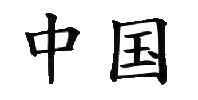China Beat Archive
Date of this Version
2011
Document Type
Article
Citation
2011 in The China Beat http://www.thechinabeat.org/
Abstract
Mao Zedong may no longer be the sublime object of desire in China, but in recent decades his image has been continuously invoked and consumed in countless guises – both familiar and new – ranging from pop art portraits to the ubiquitous face of Chinese banknotes, from Cultural Revolution kitsch to the ObaMao souvenirs currently found in tourist traps around China. The reproduction of Mao in his various postmodern manifestations suggests a loss of meaning and depoliticization; at the same time, however, the deep-seated clash between sentimental and polemical cultural representations also makes clear that there is still much at stake in the question of his significance. In particular, following Li Zhisui’s The Private Life of Chairman Mao: The Memoirs of Mao’s Personal Physician (1994), biographies have become the preferred medium amongst English-language publications for depicting Mao’s life and worldviews. Li set in motion a flood of research into the leader’s private life and a broad shift away from the revolutionary presented in Edgar Snow’s Red Star Over China (1938) and toward the monster portrayed in Jung Chang and Jon Halliday’s controversial Mao: The Unknown Story (2005). Followers of the cult of personality were well-known during the Cultural Revolution for religious performances of love for their savior, but detractors have been no less willing to get intimate with Mao – though they have inverted the values of hagiography to feature spectacular tales of infidelity, cruelty, and misrule. This spotlight on the deficiencies of Mao’s character seems complicit with the naturalization of private self-interest in postsocialist China.
Included in
Asian History Commons, Asian Studies Commons, Chinese Studies Commons, International Relations Commons



Comments
Copyright 2011. Used by permission.